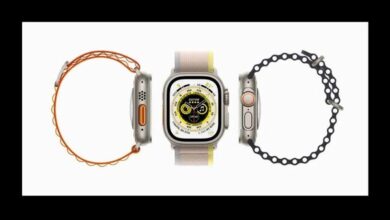Chandrayaan-3: Moon Mission Reloaded
Discover Chandrayaan-3, India's moon mission. It softly landed at the lunar south pole and boosted worldwide lunar exploration.

Chandrayaan-3 was a follow-up mission to Chandrayaan-2. It was the first Indian mission by ISRO to soft land on the lunar south pole and also deployed a rover to explore the surface.
The mission was launched by the LVM3 rocket from the SDSC SHAR spaceport in Sriharikota on 14 July 2023, at 2:35 PM, and successfully landed on the lunar surface on August 23, 2023, at 06:04 PM. The lander and rover were brought to the moon by the propulsion module, where they were separated and the lander gently touched down on the surface. The rover was then sent out to investigate the vicinity of the landing site.
A thermal conductivity and temperature sensor, a seismic sensor, a plasma density sensor, and a laser retroreflector array were among the scientific tools the lander was equipped with.
Rover had two scientific instruments:
- An alpha particle X-ray spectrometer
- A laser-induced breakdown spectrometer.
India’s space program made major advances with Chandrayaan-3. Now we can understand the moon better. New space technologies were developed as a result of the mission.
Here is a table of the mission’s key features in the past tense:
| Feature | Details |
|---|---|
| Launch vehicle | LVM3 |
| Launch site | Demonstrate a safe and soft landing on the lunar surface, deploy a rover to explore the surface, conduct scientific experiments |
| Destination | Moon |
| Landing site | South pole |
| Lander payloads | Thermal conductivity and temperature sensor, seismic sensor, plasma density sensor, laser retroreflector array |
| Rover payloads | Alpha particle X-ray spectrometer, laser-induced breakdown spectrometer |
| Mission objectives | Demonstrate safe and soft landing on the lunar surface, deploy a rover to explore the surface, conduct scientific experiments |
| Lander name | Vikram |
| Rover name | Pragyan |

The mission’s objectives are to:
- Make a safe and soft landing on the lunar surface
- Demonstrate the ability to rove on the moon
- Conduct in-situ scientific experiments
To achieve these objectives, the lander has a number of advanced technologies, including:
- Laser and RF altimeters for measuring the distance to the ground
- A laser Doppler velocimeter for measuring the lander’s velocity
- A laser gyro for measuring the lander’s orientation
- A propulsion system for controlling the lander’s descent and landing
- A navigation, guidance, and control system for guiding the lander to the desired landing site
- A hazard detection and avoidance system for preventing the lander from landing in hazardous areas
- A landing leg mechanism for supporting the lander on the lunar surface
- The lander and rover have also been subjected to a number of tests to ensure their safety and reliability. These tests include:
An integrated cold test, which simulates the conditions of the lunar environment on Earth
An integrated hot test, which simulates the conditions of the lunar environment in a laboratory setting
A lander leg mechanism performance test, which tests the ability of the landing legs to support the lander on the lunar surface
Specifications for Chandrayaan-3:
- Mission Duration: About 14 Earth days (One lunar day).
- Landing Site: A specific area on the moon’s surface measuring 4 km by 2.4 km located at 69.367621°S and 32.348126°E.
- Science Payloads:
- Lander: RAMBHA, ChaSTE, ILSA, LRA
- Rover: APXS, LIBS
- Propulsion Module: SHAPE
- Two-Module Configuration: Propulsion Module (Transports Lander to Lunar orbit) and Lander Module (Rover is inside).
- Total Mass: 3900 kg (Propulsion Module: 2148 kg, Lander Module: 1752 kg including a 26 kg Rover).
- Power Generation: Propulsion Module: 758 W, Lander Module: 738W (with Bias), Rover: 50W.
- Communication: The propulsion Module communicates with IDSN, the Lander Module communicates with IDSN and Rover, the Chandrayaan-2 Orbiter is available as a backup link for the Lander-Rover communication, and Rover communicates only with the Lander.
- Lander Sensors: Various sensors including laser-based ones for navigation and hazard detection.
- Lander Actuators: Four reaction wheels for orientation control.
- Lander Propulsion System: Bi-Propellant Propulsion System with four 800 N Throttleable engines and eight 58 N engines, controlled electronically.
- Lander Mechanisms: Includes landing legs, rover ramp, various scientific instruments, umbilical connector protection mechanism, and an X-Band antenna.
- Lander Touchdown Specifications: Vertical velocity ≤ 2 m/s, Horizontal velocity ≤ 0.5 m/s, Slope ≤ 12 degrees.
Objectives of the scientific payloads on Chandrayaan-3’s Lander Module, Rover, and Propulsion Module:
Lander Payloads:
RAMBHA: (Radio Anatomy of Moon Bound Hypersensitive Ionosphere and Atmosphere):
Objective: Measure the density of ions and electrons in the near-surface lunar plasma and how it changes over time.
ChaSTE (Chandra’s Surface Thermo-physical Experiment):
Objective: Conduct thermal property measurements of the lunar surface near the polar region.
ILSA (Instrument for Lunar Seismic Activity):
Objective: Measure seismic activity around the landing site and study the structure of the lunar crust and mantle.
LRA (LASER Retroreflector Array):
Objective: Passive experiment to study the dynamics of the Moon’s system.
Rover Payloads:
LIBS (LASER Induced Breakdown Spectroscope):
Objective: Analyze elements qualitatively and quantitatively, determine the chemical composition, and infer the mineral composition of the lunar surface for better understanding.
APXS (Alpha Particle X-ray Spectrometer):
Objective: Determine the elemental composition of lunar soil and rocks near the landing site, including elements like Mg, Al, Si, K, Ca, Ti, and Fe.
Propulsion Module Payload:
SHAPE (Spectro-polarimetry of HAbitable Planet Earth):
Objective: This payload is focused on future discoveries of smaller planets by studying reflected light.”The mission wants to find out if other planets could support life.”
“Chandrayaan-3’s instruments aim to gather useful information about the Moon, like what it’s made of and whether it could be a place where life could exist.”


Key Dates of the Chandrayaan-3 Mission
- On July 14, 2023, Chandrayaan-3 took off from the Second Launch Pad at SDSC-SHAR in Sriharikota.
- By August 1, 2023, the spacecraft had entered the translunar orbit, positioning itself at 288 km x 369,328 km. They had plans to perform the Lunar-Orbit Insertion (LOI) on August 5, 2023.
- August 5, 2023, marked the successful insertion of Chandrayaan-3 into the lunar orbit, as intended, with an orbit of 164 km x 18,074 km.
- The LBN#2 task was successfully completed on August 6, 2023, placing the spacecraft in a 170 km x 4,313 km orbit around the moon.
- On August 9, 2023, a maneuver was executed to reduce Chandrayaan-3’s orbit to 174 km x 1,437 km.
- The orbit circularization phase took place on August 14, 2023, putting the spacecraft in an orbit of 151 km x 179 km.
- Following a firing on August 16, 2023, the spacecraft settled into an orbit of 153 km x 163 km.
- August 17, 2023, witnessed the successful separation of the Lander Module from the Propulsion Module. Deboosting maneuvers were scheduled for August 18, 2023.
- On August 19, 2023, the Lander Module was orbiting the moon at 113 km x 157 km. The second de-boosting maneuver was planned for August 20, 2023.
- By August 20, 2023, the Lander Module had reached an orbit of 25 km x 134 km. The powered descent was initiated on August 23, 2023, around 17:45 Hrs. IST.
- The mission achieved a significant milestone on August 23, 2023, with the successful soft landing of Chandrayaan-3 on the moon. India celebrated this achievement.
- On August 24, 2023, the Pragyan rover was deployed from the lander, embarking on its mission to explore the lunar surface.
Water From 390 Million Year Old Ocean Found Trapped In Tiny Rocks Found In New York
Here are some key specifications:
Mission Life: Approximately 14 Earth days (one lunar day).
Landing Site: Located at 69.367621 S, 32.348126 E, covering an area of 4 km x 2.4 km.
Science Payloads: Varied scientific instruments on both the Lander and Rover.
Total Mass: 3900 kg, including both the Propulsion Module and Lander Module.
Power Generation: Various power sources for different modules.
Communication: Multiple communication channels, including the Chandrayaan-2 Orbiter for contingency.
Chandrayaan-3’s Affordable Mission
- In 2020, ISRO estimated that Chandrayaan-3 would cost around Rs 615 crore (approx US$ 75 million). The actual cost may be higher due to launch delays.
Cost Breakdown
- The expenses for Chandrayaan-3 can be categorized as follows:
- Launch Vehicle: Rs 365 crore (approx US$ 44 million)
- Lander: Rs 250 crore (Approx US$ 30 million)
- Rover: Rs 50 crore (US$ 6.7 million)
- Ground Segment: Rs 50 crore (Approx US$ 6.0 million)
- Other Costs: Rs 150 crore (Approx US$ 18 million)
Why It’s Cost-Efficient
Chandrayaan-3 used ISRO’s own technologies for the lander, rover, and launch. Tracking stations controlled it.
Comparison with Others
Chandrayaan-3’s cost is low compared to NASA’s Artemis program, which costs around US$ 28 billion.
ISRO’s Approach
ISRO’s frugal approach includes using homemade tech and budget-friendly launch vehicles.
Showcasing India’s Skill
Chandrayaan-3 marks India’s first soft landing at the Moon’s south pole, demonstrating ISRO’s capabilities.
The Journey
Chandrayaan-3 took 41 days to reach the Moon. It launched on July 14, 2023, and gently landed on August 23, 2023.
Long Journey Explained
The Moon is far away, about 384,400 kilometers (238,900 miles), so the trip takes time, typically three days.
The Path Taken
Chandrayaan-3 used a three-stage launch vehicle. It first placed the Cryogenic Upper Stage into Earth’s orbit, which then propelled the spacecraft to the Moon.
Getting There
Chandrayaan-3’s own engines helped it reach lunar orbit on August 17, 2023. Adjustments followed for a safe landing.
A Gentle Landing
On August 23, 2023, Chandrayaan-3 softly landed on the Moon’s South Pole, with the lander, Vikram, touching down and releasing the rover, Pragyan.
Mission on the Moon
Chandrayaan-3 will explore for about 14 days, studying lunar geology, and minerals, and searching for water ice.
A Big Moment for India
Chandrayaan-3’s success shows India’s lunar exploration abilities and ISRO’s homegrown technologies.
Contributing Globally
Chandrayaan-3 is cost-effective and aids global lunar exploration efforts, a result of India’s skilled scientists and engineers.
- India Names Landing Sites of Chandrayaan-3 and Chandrayaan-2
- How is a NASA astronaut chosen and how much money does he make per year?
- India’s Aditya-L1 Solar Mission: Unlocking Sun’s Mysteries
- ISRO’s ChaSTE Payload Reveals Extreme Temperatures at the Lunar South Pole
Conclusion
Chandrayaan-3, India’s lunar mission, achieved a soft landing on the Moon’s south pole, deploying a rover for scientific work. A major success for ISRO and India’s space program is this low-cost mission. It boosts global lunar exploration and showcases India’s space prowess.






